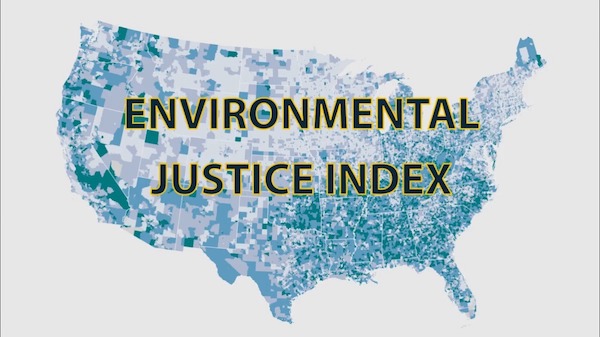SEJournal Online is the digital news magazine of the Society of Environmental Journalists. Learn more about SEJournal Online, including submission, subscription and advertising information.
 |
| A pair of federal agencies have released a new database to score environmental injustice in communities. Image: Agency for Toxic Substances and Disease Registry. |
Reporter’s Toolbox: New Environmental Justice Index Helps ID Vulnerable Communities
By Joseph A. Davis
Environmental reporters have likely heard the term “environmental justice communities” bandied about. A newly released data tool, however imperfect, may help illuminate what that really means.
The Environmental Justice Index search engine hails from the Department of Health and Human Services. You can explore the EJI search engine and get more info about the index and related tools.
Where the data comes from
HHS takes big credit for the tool, with the agencies responsible for assembling it both administrative subunits of HHS.
One is the Centers for Disease Control and Prevention, which is pretty authoritative on environmental health matters. The other is the Agency for Toxic Substances and Disease Registry, or ATSDR.
The ATSDR was created by Congress way back in 1980 to deal with communities panicked about “cancer clusters” and toxic hotspots. It has done some good work, but it is not comprehensive in its coverage. Over the decades as administrations have come and gone, it has proved politically responsive (in both a good way and a bad way).
A lot of the index’s data, or
at least the framework for it,
comes from the U.S. Census.
A lot of the index’s data, or at least the framework for it, comes from the U.S. Census. The census, of course, is pretty definitive when it comes to basic demographics.
How to use the data smartly
Toolbox’s recommendation would be to use the EJI in conjunction with other data tools. For example, in earlier Toolboxes we have highlighted the U.S. Environmental Protection Agency’s EJScreen, ProPublica’s map of toxic hotspots, the White House Council on Environmental Quality’s EJ screening tool and even EPA’s foundational Toxics Release Inventory.
Sadly, it is somewhat clunkier than those other available EJ data tools. The interface is not very intuitive and not smooth to control. Presentation begins with an apology that the EJI may be slow because of being slammed by more use than it was designed for (journalists, of course, have been trained to persist).
You could try to search the HHS EJI down to the level of individual addresses, but the information it gives does not really reach that level. It really just goes to census tracts.
A bit more fuzziness comes from the EJI’s use of a four-level (quartile) color-coding scheme to graphically indicate the level of health risk for a given geographic unit. The color rankings can be translated into a percentile score. The raw data can be downloaded. Deeper documentation is downloadable as well.
In the end, remember that one reason for such databases is the Biden administration’s emphasis on measuring its own response to environmental injustice by quantifying it in dollars. Even they would admit, though, that there’s a lot more to it than money.
So remember also that data do not tell everything. Groundtruthing the data and shoe-leather reporting are essential to making data into journalism.
The EJI may in the end prove less definitive and accurate than other data tools. But when it comes to illumination, more lights may be better. Time will tell.
[Editor’s Note: In addition to the environmental justice tools mentioned above, also be sure to check out our Topic on the Beat: Environmental Justice page and get environmental justice headlines from EJToday].
Joseph A. Davis is a freelance writer/editor in Washington, D.C. who has been writing about the environment since 1976. He writes SEJournal Online's TipSheet, Reporter's Toolbox and Issue Backgrounder, and curates SEJ's weekday news headlines service EJToday and @EJTodayNews. Davis also directs SEJ's Freedom of Information Project and writes the WatchDog opinion column.
* From the weekly news magazine SEJournal Online, Vol. 7, No. 31. Content from each new issue of SEJournal Online is available to the public via the SEJournal Online main page. Subscribe to the e-newsletter here. And see past issues of the SEJournal archived here.













 Advertisement
Advertisement 



